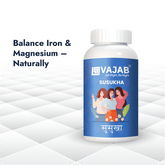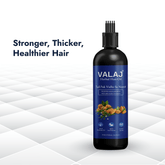Why Nearly Half of Indian Women Are Anemic — and What Can Change That
Health & Wellness • 8–10 min read • Updated: 25 Oct 2025
An easy-to-read, research-informed overview of causes, tests, food-first corrections, and a gentle herbal support perspective.
The Global and Indian Reality of Anemia
Anemia is one of the world’s most widespread nutrition-related conditions. Over one in four people globally are anemic, and India carries a disproportionately high burden — especially among women of reproductive age and children. Beyond “low hemoglobin,” anemia affects energy, immunity, cognition, and maternal health.
What Is Anemia?
Anemia occurs when the body doesn’t have enough healthy red blood cells or hemoglobin to carry oxygen efficiently. Less oxygen means low energy across tissues.
- Iron deficiency – most common cause in India
- Vitamin deficiencies – low folate, B12, or C
- Blood loss – heavy periods, ulcers, childbirth
- Chronic diseases – kidney issues, inflammation
- Parasitic infections – hookworm, malaria, etc.
Why It’s So Common in India
1) Dietary Patterns
Predominantly vegetarian diets often lack easily absorbed heme iron. Non-heme iron from plants needs vitamin C pairings to absorb well.
2) Poor Absorption
Phytates (in cereals/pulses) and tannins (in tea/coffee) can inhibit iron uptake when consumed near meals.
3) Regular Iron Loss
Menstruation and childbirth increase iron demand and losses; without replenishment, stores fall.
4) Compliance Challenges
Side effects of iron tablets (nausea, constipation) and myths about “body heat” lower adherence.
5) Infections & Inflammation
Intestinal worms or chronic inflammation reduce red blood cell production and iron utilization.
How Anemia Is Diagnosed
| Test | Measures | Why It Matters |
|---|---|---|
| Hemoglobin (Hb) | Oxygen-carrying protein | Indicates severity |
| Ferritin | Stored iron | Low = deficiency |
| MCV / MCH | Cell size & color | Identifies anemia type |
| Transferrin Saturation | Iron transport efficiency | Low = poor intake or chronic loss |
Treatments — And Why They Sometimes Fail
Iron–folic acid supplementation is standard, yet real-world success varies due to taste issues, digestive side effects, inconsistent use, and limited awareness. Food fortification (iron in salt/flour) helps but depends on access and habits.
Food-First, Sustainable Corrections
- Iron-rich foods: Include amaranth, spinach, moringa leaves, fenugreek leaves, lentils, chickpeas, soy, sesame, jaggery, dates, and for non-vegetarians: eggs, fish, and meat.
- Leafy green power: Dark green vegetables like moringa, spinach, bathua, mustard leaves, and methi are rich sources of plant-based iron.
- Cookware tip: Use iron kadai/pan while cooking to help slightly boost dietary iron intake.
VAJAB Healthcare’s Supportive Approach
Susukha from VAJAB Healthcare is a gentle herbal blend designed to support natural vitality and nutrient balance, especially for women.
- Encourages healthy hemoglobin levels with diet
- Improves nutrient absorption
- Supports menstrual wellness
Note: Susukha is a nutritional support, not a replacement for medical treatment. Always consult your doctor.
Simple Daily Tips
- Include nuts & seeds daily for iron and magnesium
- Snack on jaggery or dates for natural energy
- Prioritize rest & adequate sleep
- Get regular health checkups






